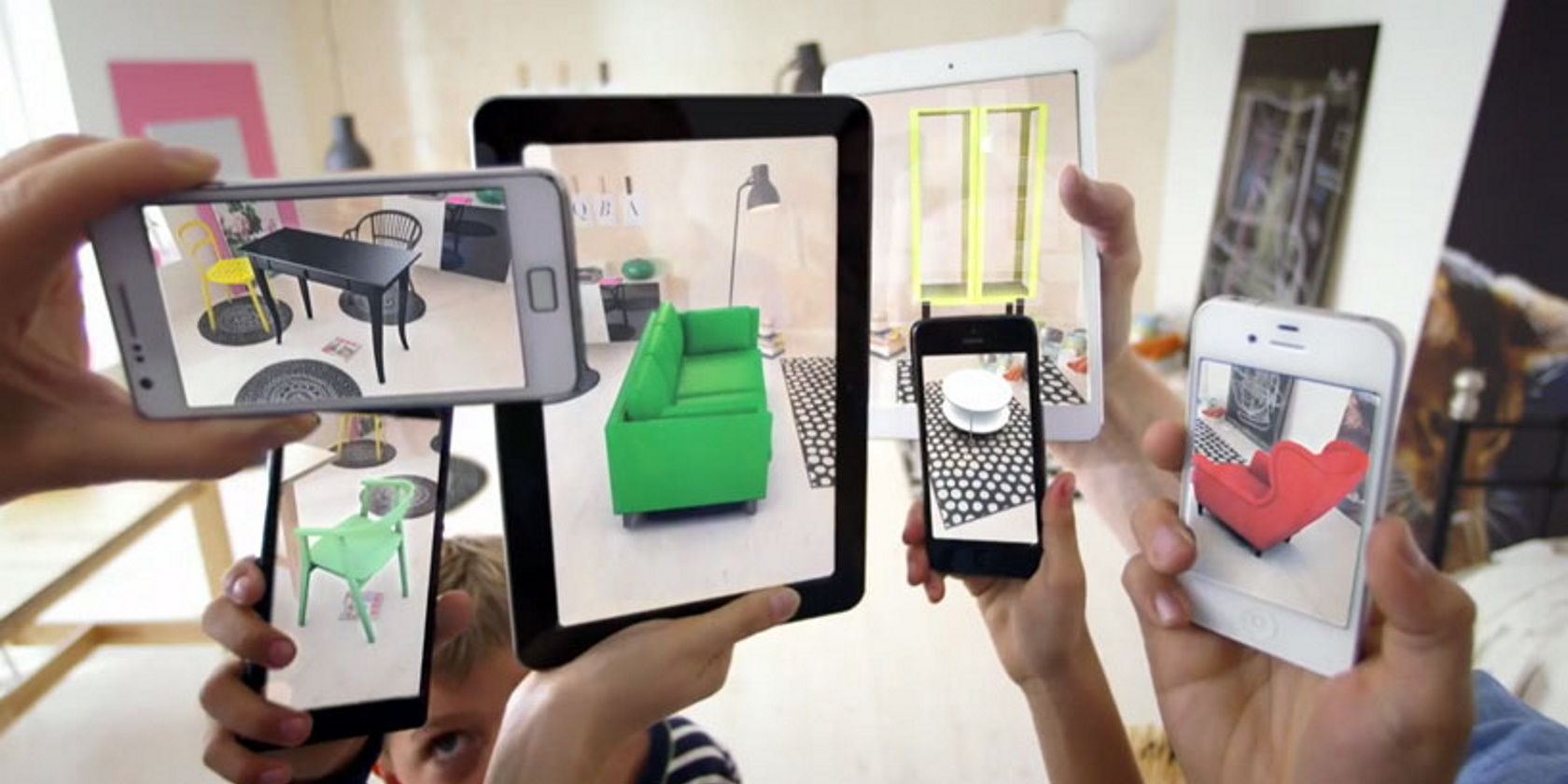You can find applications of augmented reality (AR), virtual reality (VR), mixed reality (MR), and extended reality (XR) in the military, search engines, health, retail, arts, and gaming
In short, AR and other virtual reality technologies are everywhere.
Here are ten modern-day applications of augmented reality that you need to know about.
1. Augmented Reality in the Military
Integrated Visual Augmentation System (IVAS) is being developed by Microsoft in partnership with the US Army to improve soldiers’ situational awareness, comms, battlefield navigation, and overall operational efficiency.
IVAS integrates Microsoft’s HoloLens tech and features a heads-up display (HUD), thermal imaging, interactive maps, and overhead compass. With it, soldiers can track and share enemy positions across the board. It can also detect friendly, neutral, and hostile targets.
It allows you to see in the dark (night vision), to see through smoke, and even peek around corners, thanks to multiple front-facing head-mounted cameras. Soldiers can also look back and review ops by watching a video game-like replay of their last operation, among many other features.
2. Augmented Reality in Search
3D Animals are another interesting application of AR technology. Google 3D animals allows you to find and view life-sized animals in 3D as well as interact with them in your local space using augmented reality.
Using an ARCore enabled device and supported browsers like Chrome, Opera, and Safari, you can Google image-search 3D animals, such as zebras, koalas, sharks, and more. On the results page, tap on View in 3D, then tap on View in your space.
Point your phone to the ground to view the life-sized zebra in 3D. Using AR, you can move it around and hear it bark, bray, and snort just as it does in the wild. It was introduced at the 2019 Google I/O and features a growing list of animals—even dinosaurs!
3. Augmented Reality in Fashion Retail
Asos’ See My Fit technology uses augmented reality to virtually fit clothing onto models. It enables you to see exactly how products fit by trying up to 500 products per week on six models. This way you can visualize the size, fit, and cut of each apparel before you pay.
The retailer is currently not working with models in its studios due to COVID-19. Instead, Asos is using flat shot images and product shots from models’ homes in addition to See My Fit to continue to serve its customers.
Earlier in 2019, the leading fashion retailer introduced Virtual Catwalk, an AR-enabled feature that allows you to virtually visualize and experience up to 100 ASOS Design products. Zara, Ikea, Shopify, Kendra Scott, and many others also use AR in e-commerce.
4. Augmented Reality in Gaming
You’re probably spending more time gaming since COVID-19, but are you considering or using AR to enhance your gaming experience? If not, you’re missing out because AR is fundamentally changing the way you access, consume, and experience gaming.
Game developers are experimenting with more immersive and experiential features in game development. One of the most popular examples is Pokémon Go which was released in 2016, allowing you to experience AR by importing the game characters into your physical environment.
Compared to other extended reality gaming tech, AR is less immersive, but it is still interactive, cheaper, more accessible, and a cut above traditional mobile gaming. Google now allows you to view Pac-Man and other Japanese game characters in AR.
5. Augmented Reality in Coloring Books
Traditional coloring books allow you to draw and express your artistic abilities on paper in 2D. However, this is static and somewhat limiting in today’s extended reality world. Enter the exciting world of 3D drawing using AR.
Disney’s augmented reality coloring book app allows you to draw your favorite characters in 2D on paper, and have them rendered in 3D in real-time. Using texture generation, the app matches and duplicates sections of the drawing in 3D. With deformable surface tracking, you can move your characters as you turn the pages.
Disney’s coloring books are available for children and adults alike, featuring over 100 images to inspire creativity and motivate you to draw. The app won Disney the 2016 Edison award.
6. Augmented Reality in Business Cards
Say goodbye to traditional static business cards and say hello to dynamic AR business cards that allow you to fit a lot more into your business cards.
These animated cards can contain so much information about you, your businesses, company website, portfolio—you name it. Some even allow you to add a voice message to further personalize your card. It allows you to turn your business card into a presentation.
Think of all the things you can do with a well-structured presentation—you can do all that on your AR business card. Not only does it market you effectively, but it also creates a solid first impression and makes your card stand out remarkably and memorably.
7. Augmented Reality in Obstetrics
Road to Birth is an AR+VR project being developed by the Innovation Team at the University of Newcastle, Australia, to provide visual insights into the stages of childbearing and its effects on pregnant women.
This is a world-first innovation that is set to revolutionize healthcare for healthcare professionals and expectant mothers. It uses Samsung GearVR, HTC Vive (VR), and Holo Lens (AR).
This mixed-reality simulation will give you the ability to learn about key anatomy changes, birthing techniques, and real-world emergencies in 3D using AR and VR. This will accelerate learning for students and giving mothers-to-be a better understanding of bodily changes that they encounter throughout pregnancy.
8. Augmented Reality in Architecture
AR is also employed in the architecture and construction industries for space planning and design visualization. Using specialized apps, you can transform a plain drawing plan on paper into a finished 3D model.
In construction, AR can also be used in design analysis to undertake a virtual tour of the finished 3D model. This visual inspection can help the engineers and contractors to see how high the ceiling is, for instance, and hash out any issues with constructability, plus assist with prefabrication of components.
In 2011, following the Christchurch earthquake, the University of Canterbury, New Zealand, released CityViewAR to enable city planners and engineers to visualize and re-imagine buildings as they were before the earthquake.
9. Augmented Reality in Sports
Imagine team set-plays displayed right in front of you in 3D, pre-game practice with computer-generated opponents, virtual training environments, custom-built training sets for individual athletes, and much more.
Teams in the National Football League (NFL), the Atlantic Coast Conference (ACC), and various soccer teams are already using these technologies. EON Sports is one of the firms powering this trend.
Augmented reality in sports promises fewer injuries from virtual training, and 24/7 personal AR coaches, plus enhanced experiences for players, officials, spectators, and other stakeholders.
10. Augmented Reality in Automotive Retail
AR can help you to drive showroom visits and car sales, better communicate technical details about a car or its components to your sales team and customers, and more.
Engine Creative implemented “X-Ray car AR” technology for Delphi at the Automechanika show in Frankfurt. Visitors to the exhibition stand were able to scan, visualize, and interact with a life-sized 3D image of a Honda Civic, to better understand how Delphi products work under the hood—boosting customer engagement and sales.
AR can also help you to digitize your showroom. In 2014, Audi applied AR to Audi City to create the world’s first fully digitized showroom. This allows customers to choose, customize, visualize, and interact with their chosen cars using their mobile phones.
With this, you can maximize your showroom space to showcase any number of vehicles, plus you can eliminate out-of-stock issues by literally importing any car into your showroom. You can also take your showroom along with you everywhere you go. This way, you can engage customers, book a showroom visit, a test drive, and hopefully close a sale.
AR and Its Future Prospects
Niantic is developing new AR glasses, Snap now allows you to view digital monuments using AR in Snapchat, and is developing AR glasses that may allow you to apply lenses and filters to your surroundings.
With augmented reality, the possibilities are endless, as the technology becomes more accessible and affordable.
Together with other extended reality technologies, you can expect to see more immersive and interactive ways of experiencing and consuming content.
About The Author

